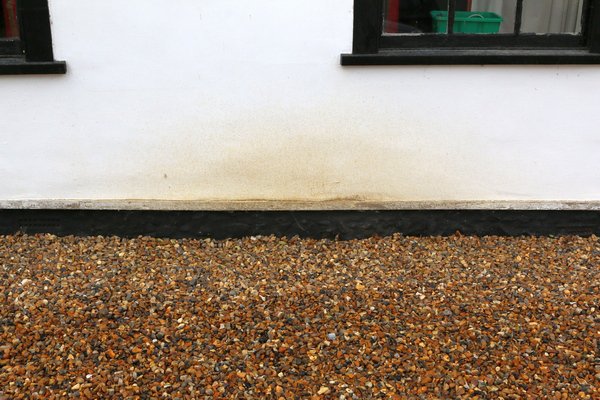I've long subscribed to the scepticism of rising damp and its prevalence and read quite a lot of articles, forum threads about the subject.
However ... my problem.
Victorian house. Wet part of the country. No dpc. Mainly sandstone rubble fill construction with some brick walls. Concrete rendered (I'm 99.9% sure the render is original). Interior of walls originally lime plastered but now a mix of lime, pink stuff and plasterboard. We have left some walls as bare stone after removing internal plaster/lime - a bit dusty but looks nice and means these walls dry out nicely if they are damp.
Been here 10 years and have gradually eliminated penetrating damp (gutters/rooves etc). In our hallway we definitely have damp that appears to be rising. It is on the side of the house that is near to the road where the ground is higher. Although most of the house is sandstone, one side of the hallway is brick. (I think it is a Victorian extension to the original building.This is one of the damp walls. I thought we'd cured the damp, had someone do a quick plasterboard job, but the new plaster shows damp up to 1 metre. the hallway does always smell damp.
So I'd be inclined to believe this is rising damp. Just to note the house is very well ventilated (ie very draughty). I could dig a ditch along the outside of this wall (currently paved with old stone) but due to the topography there is nowhere that water could drain to from this ditch. I have read on here that part of the problem could be water bouncing up from the paved area alongside the wall. i'm inclined to believe this could be a factor but not sure how I could deal with it.
So I'm thinking of trying the dreaded chemical injection along the brick wall as a trial. DIY should not be too costly. I understand that it should be injected along the mortar bed. Howevr I can't tell where that is due to the very strong concrete render. Should I just inject through the render and disregard whether it is into the mortar bed or hack off the render at low level (heavy duty job as it's really tough stuff this Victorian concrete)

However ... my problem.
Victorian house. Wet part of the country. No dpc. Mainly sandstone rubble fill construction with some brick walls. Concrete rendered (I'm 99.9% sure the render is original). Interior of walls originally lime plastered but now a mix of lime, pink stuff and plasterboard. We have left some walls as bare stone after removing internal plaster/lime - a bit dusty but looks nice and means these walls dry out nicely if they are damp.
Been here 10 years and have gradually eliminated penetrating damp (gutters/rooves etc). In our hallway we definitely have damp that appears to be rising. It is on the side of the house that is near to the road where the ground is higher. Although most of the house is sandstone, one side of the hallway is brick. (I think it is a Victorian extension to the original building.This is one of the damp walls. I thought we'd cured the damp, had someone do a quick plasterboard job, but the new plaster shows damp up to 1 metre. the hallway does always smell damp.
So I'd be inclined to believe this is rising damp. Just to note the house is very well ventilated (ie very draughty). I could dig a ditch along the outside of this wall (currently paved with old stone) but due to the topography there is nowhere that water could drain to from this ditch. I have read on here that part of the problem could be water bouncing up from the paved area alongside the wall. i'm inclined to believe this could be a factor but not sure how I could deal with it.
So I'm thinking of trying the dreaded chemical injection along the brick wall as a trial. DIY should not be too costly. I understand that it should be injected along the mortar bed. Howevr I can't tell where that is due to the very strong concrete render. Should I just inject through the render and disregard whether it is into the mortar bed or hack off the render at low level (heavy duty job as it's really tough stuff this Victorian concrete)




